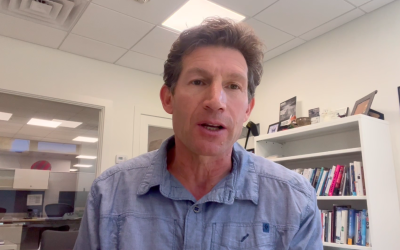Leading a destination marketing organization (DMO) is an amazing opportunity. If you’re looking for a challenge, destination marketing is surprisingly complex. The industry is great, the people who work at DMOs are smart, but the category and the marketplace surrounding it is in flux. Still, the efforts and outcomes from the work done by DMOs can have a really positive impact on people’s lives.
This post is not about how to run a business. If you’re hired as a leader, these are skills you already possess. This post focuses on a few critical things that a new leader at the DMO needs to understand and consider in order to avoid speed bumps and succeed in the industry.
1) Don’t underestimate the impact of external stakeholders
If your title is CEO, you will spend at least 50% of your time managing external stakeholders. Directors, managers and other members of your leadership team will also need to spend considerable time with them, as well. Being a good DMO leader means that you need to be great at managing relationships.
Strong leaders are used to making bold decisions. This is a necessary quality. But many CEOs focus these bold decisions on internal change. At a DMO, the CEO needs to focus externally first.
This may seem like a waste of time or a distraction. You are running the organization, after all, and you report to your board, so why bother with everyone else? Inertia can be compelling. But it’s not the way to confidently lead a DMO, and you will get burned. Why? DMOs are extremely visible entities, and directly or indirectly, most DMOs manage public funds. One also has to consider the emotional connection a destination has to its residents. You represent the place where people to choose to live, to the rest of the world. Without stakeholders on your side, it’s going to be a tough, and likely impossible road ahead.
For a CEO (or any type of manager) who’s just starting out, start by taking the time to understand the stakeholder landscape. This doesn’t have to take long. Bring the right people into a room for half a day and hold a stakeholder mapping exercise in which you identify, prioritize, and understand who the key players are. But think creatively when you do this. Consider tourism businesses, politicians, upward and downward DMOs, and your residents. Understand the players, their agendas, how they connect to each other and their influence. Most will be supportive, some will have an agenda and others will likely be carrying historical baggage.
2) Review and understand existing strategies before adding your own ideas
New leaders bring their own ideas. There’s a new sheriff in town; you may want to make a mark and demonstrate that things will be different under your leadership. During the interview process you probably shared some of your ideas already, and they’re likely the reasons reasons you were hired. So take no prisoners and let’s get it done, right?
Not exactly.
Blowing a fresh wind through an organization is often a good thing, and sometimes very necessary. However, new leaders without DMO experience can make disastrous decisions early on, that are in fact easily avoided. Years of effort may be blown up because a new leader didn’t take the time to understand the existing strategy and made significant changes based on their own assumptions going in. We’re not suggesting that leaders leave everything in place, quite the contrary (see #4), but new leaders need to understand all the reasons why things are the way they are. Understand first, make change later.
Offer your management team the opportunity to present the current objectives, strategies and processes. Enter these meetings open minded, curious and without assumptions. Make sure your staff knows this. Ask “why?” a lot in these meetings. Ask for KPIs and metrics. Don’t challenge things too much at this point. Just figure out what’s happening and why. Form opinions and hypotheses. And before you step in, seek consultation (see #3).
A starting CEO who follows the previous points will have a pretty decent understanding of their new organization’s current state by the end of week two. You’ll know your people, departments, priorities, activities and hopefully also have a deeper understanding about what your DMO does, and why. You’ll also realize that mapping out the stakeholder landscape was pretty useful.
3) Build consultation into almost everything you do
The most overlooked and ignored aspect of destination marketing is consulting with the very stakeholders you mapped out earlier. Consultation can be time consuming, frustrating, confusing and confrontational. Too many cooks in the kitchen can ruin the broth and lead to bad decisions or mediocre programs and campaigns. These are risks, to be sure. But they are easy to mitigate when you use the right process. Risks increase, along with the probability of significant consequences that may take a long time to overcome, when industry, politicians or residents do not accept your strategies, campaigns, brands, etc.
Stakeholder consultation is not about making sure everyone is getting exactly what they want. Nor is it about creating a grand compromise. Consultation is when the DMO gives people a voice and builds trust. Do it in the right way and you might be surprised what you learn or build allies in the process. Based on our years of consulting experience, DMOs are often fearful going in but they always walk away amazed by what they have learned. Make sure the process is fun. Get people engaged in exercises. Use Design Thinking processes.
Your actions can directly affect the bottom line of hundreds or thousands of businesses. This is important to remember. And it’s a huge responsibility. As a DMO, you are often removed from your destination’s products and experiences. Your industry stakeholders deal with your guests every day. They live it. You need to know what’s going on. You need to know how you can help them succeed. You need to empathize with them. This is vital.

William Bakker, Chief Strategist at Destination Think
It’s equally essential that you represent the people who live in your destination. Locals have a strong emotional connection to the place in which they live. And whatever you communicate needs to connect with their identities. A DMO has a big responsibility, and it can be disastrous if you get it wrong.
You can’t make everybody happy, however. Often there are many conflicting objectives and opinions and people who solely consider their own benefit without thinking about the bigger picture. But understanding key concerns is incredibly valuable. They inform your decision and help you identify the potential stakeholder challenges up front. Prior to consultation, you can also can plan for the people who might disagree with you and create options that might help change their minds or mitigate risk.
Use the stakeholder map as a guide for consultation. Build it into your processes. As a starting CEO, take a week or two to meet with them. If your destination spans a large geographical area, travel around. Visit local DMOs, visit the big attractions. Also make sure to go beyond your big accommodations and attractions. Stay with family-run hotels. Eat at a diner. Talk to visitors and guests everywhere. Talk to bartenders, wait staff, taxi drivers, locals enjoying the experiences. This activity is important and valuable. These people deliver on the brand you represent.
4) Dare to stop doing things
As a leader just starting out, you probably have a one-time opportunity to create sweeping change. One of the first things Steve Jobs did when he returned as CEO of Apple in 1997 was to conduct a product review and reduce the product line from 350 to 10. It allowed his team to focus. And we all know the results of how that turned out.
Stopping things is one of the hardest things to do in business. At DMOs, this is no different. There are many legacy activities some people feel very strongly about or are emotionally connected to. And the people who feel the strongest about your products may not even be inside the organization. Some may believe that the business depends on these. Some of your staff might have worked on the products or processes for years.
But as a DMO leader, you need to make those tough calls. Don’t let your people spread themselves thin. Focus on priorities and create a transition plan for discontinued activities. Make it a priority to examine everything your DMO does yearly. Don’t let things linger. There’s always a reason to keep things around, but this is where you need to lead. Stop your team from doing the things that aren’t effective or efficient.
5) Create a culture of innovation
The impact of a DMO’s possible past mistakes (for example, a campaign that went wrong or stakeholder backlash) can often lead to unnecessary bureaucracy moving forward and new cultures of risk aversion. People tend to overreact when something goes wrong in a public way. The result? Managers start insisting on copious levels of sign off across every little thing, and down-the-line staff refuse to make any decisions for fear of getting in trouble if something goes wrong. Why should they? It’s easier to pass the buck if your manager makes the big decision.
As a leader, you need to lead by example in order to create the right corporate culture. Create a culture where your staff can excel and isn’t afraid to be innovative, try something new, or fail. You can’t win without failing.
Here’s how to do it: give people clear objectives, responsibilities, KPIs and a big box to play in. Provide them with the authority to make decisions and have an open door policy that encourages them to come to you (or your team) for help. Then hold them accountable. Educate people about the political landscape by helping them understand the positive impact their activities can have on businesses, guests and residents. Educate, don’t police. Insist on consultation with stakeholders.
And when something does go wrong or causes controversy, stand by your team. Fail forward. Help stakeholders understand what went wrong and how you’ve learned from it. Reward people who bring lessons forward from failures. Make sure those lessons are applied. That’s how you demonstrate consistent improvement.
Make sure your board and stakeholders understand this going in. Innovation means that things might not always work. Develop your relationships with key stakeholders. Help them understand what the DMO is doing and why. Your relationships need to be strong so the organization can take a hit when things don’t go as planned. Don’t be afraid to be honest and transparent. Showing some vulnerability and humility often goes a long way.
6) Think twice before going retail
A DMO is not an Online Travel Agent. It’s very tempting. Measuring the impact of a DMO’s activities is tough and stakeholders (typically hotels) want more business. Why not deliver on it in the most direct way possible? The short answer is because:
- there plenty of places where consumers can purchase what that they need; there’s no need for another player
- consumers shop around and a DMO rarely provides the best deal
- a DMO doesn’t support the required e-commerce driven culture,
- as a public company a DMO could be competing with private companies or even its own industry
There are a few exceptions. But by and large the above holds true. Most DMOs need to be present online earlier in the path to purchase and should instead put more focus on the product and destination experience.
7) Stay lean
The amount of disruption happening right now in the industry is enormous and hard to keep up with. But this change will continue to happen for some time and will likely never settle. Deciding how to structure your organization, what capabilities to bring in-house and what capabilities to outsource, is critical.
Build a team that manages external relationships but keeps strategic knowledge in-house. Outsource most of the tactics. Keep your organization lean and nimble. Having a large team makes things more complex and makes changing directions and being reactive very difficult (see #4). Understand your operating environment and stick to your core competencies. Apple doesn’t build its iPhones in-house, either.
8) Understand the business you’re in
Put your visitors first. You’re in the business of making memories. Never forget that.
Featured image credit: Thomas Abbs, Flickr









totally agree in principle but the bit that is missing is how one funds the damn DMO and that probably takes more time than making memories!
Funding stability is definitely a big challenge and there’s no silver bullet. Protecting, expanding and diversifying funding streams is definitely a big part of being a DMO leader. You’re often at the whim of political decisions. But in some sense not that different from any company leader, it’s in a very different context though. It’s a valid point that new DMO leaders need to be aware of that.
This article is bang on. Love it.
Yep. Thoughtful well-written piece.
Fantastic piece William. Great work.
Thanks Paul!
I really enjoyed this article William, I feel Iam very much a part of the characters you speak. Your insight to struggles is tremendous and your bang on…. alas it is a battle, but a very winnable battle.
I handle a lot of the marketing for many tour operators and resorts in BC and the struggles are much more deep rooted than what meets the eye. It’s a web.
I’m looking forward to your presentation coming up in the next week.
Great article! You mentioned that a DMO team needs to be lean. Would be great to get your take on what a DMO marketing staff should consists of in the modern day of destination marketing.
Interesting article. Having worked in a DMO for 30 years I’ve seen a lot of leaders come and go. I agree the better ones have taken on the points you list. I would add to the list to be a champion of the customer/visitor. Too often things get prioritised because they are what other (political) stakeholders think is needed or is seen as a quick win rather than is of value to the visitor. Far too many rebranding attempts, or rather representation that are pure change vanity and irrelevant to consumers. Indeed they always start with the rationale that a brand needs to be consistent and have longevity to make impact, a complete contradiction to the rationale for the nee brand. I would also add be passionate about the industry you are in. I have seen generalists parachuted in from other industries because they are good leaders, but have failed because they didn’t understand or seek to understand what is a very complex industry.